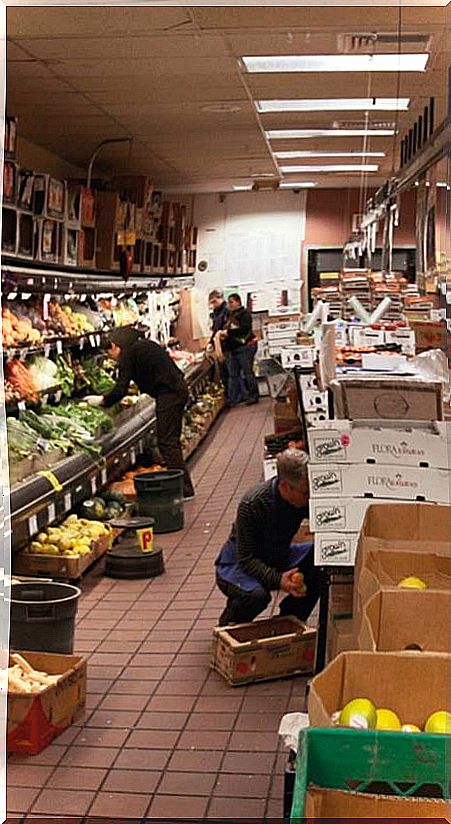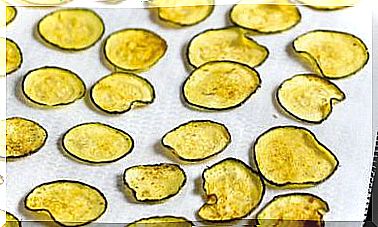Food Coop: The Revolution Starts At The Supermarket
This cooperative supermarket is said to be the largest social experiment in New York. Now a documentary shows how it works and invites us to join together in other cities to revolutionize the way we shop.

A beautiful social experiment, but very bad news for large food chains: this is how Tom Boothe presents in his documentary Food Coop one of the cooperative projects that has been making the most fortune in recent years in New York City.
This is Food Coop, a cooperative supermarket created in Brooklyn in 1973 by a couple of idealistic friends who one fine day decided to get together to be able to eat cleaner food at a better price, apart from the large distribution chains.
More than four decades later, the cooperative already has 17,000 members. Its transformative power is such that the documentary, simply titled Food Coop , is encouraging citizens from other parts of the world to create similar projects in their cities.
Food Coop, much more than a supermarket
The Food Coop is in Park Slope, a Brooklyn neighborhood that for some residents has accused the problems of gentrification for years. The documentary shows us with humor and realism the day-to-day life of the cooperative and openly delves into the difficulties involved in a collective project of these dimensions.
And the fact is that every day, when its doors open, the Food Coop becomes a hive of activity. In the corridors a lot of people go from here to there making sure that everything works. People of different origin and economic level and with the most diverse motivations, but with a common goal: to make the project possible.
Neither in that neighborhood nor in others around it is it easy to get quality healthy food, even less organic at a good price. Or there are establishments whose offer and hygiene conditions leave a lot to be desired, or expensive stores with exclusive products that only some can afford.
In the Food Coop, however, you can not only find all kinds of food, mostly organic and local, but also other types of hygiene and household products that allow you to do all the shopping in the same place and in good condition. price. However, supply and savings do not explain everything.
The Food Coop is not a typical cooperative: it has managed to grow like no other through a participatory democracy system that represents a true empowering experience for its members, but has also proven to be extraordinarily efficient and profitable. This allows you to offer services and support that are only available for large projects.
And most importantly: it has become a benchmark for an entire community that is showing that self-management is also possible on a large scale and has many advantages.
2 hours and 45 minutes of work per month at the cooperative
To enter and become a member owner is no different from other cooperatives. A single entry fee must be paid, which is recovered when you unsubscribe.
However, the Food Coop takes into account the economic level of those who want to be part of it and, to ensure that no one is left out because they cannot pay the fee, it offers a reduced one for people with lower incomes.
Once inside, the minimum commitment of dedicating 2 hours and 45 minutes of work per month to the cooperative must be met . Shifts are flexible, even interchangeable, but must be adhered to. In exchange, you have free access to buy there and to participate in assemblies and decision-making.
With this, almost all work needs are covered (there is only a small group of people who are hired to carry out coordination work) and the cooperative’s spending is reduced in one of the most burdensome items in supermarkets: the workforce.
And the thing is that at the Coop there is work for everyone : at the cash desk, cleaning, receiving merchandise, replenishing stock , accounting, controlling shifts, making compost with vegetable waste in a small garden, in the children’s room where to leave the children when the shift is fulfilled or the purchase is made …
There are even people who walk you a couple of blocks to the front door or the subway station. One of the most impressive scenes in the documentary is seeing the long journey that a woman is capable of traveling to make her purchases at the cooperative!
$3,000 in savings per year in the shopping cart
The system has become so efficient that the supermarket renews its entire stock about 70 times a year, much more than conventional businesses. All profits are reinvested in the cooperative, to such an extent that throughout its history they have allowed several price reductions to be implemented.
The savings that this entails for members and their families is not trivial: prices can be between 20 and 40% lower. A couple shows the results of their experiment before the camera: the same weekly purchase made in the cooperative or in a hypermarket allows them to calculate that buying in the cooperative saves about $3,000 a year.
Saving comes with an even more valuable advantage: the cooperative leaves with a healthier shopping basket. This is so both for the variety of fresh foods and for their quality, as they are local products and mostly organic or, at least, low in pesticides.
An inclusive and participatory model with many advantages
There are many reasons to join the cooperative and all are valid. Some people sign up precisely because of the savings that the cooperative means for their pockets. Others do it thinking about their health, because they want to avoid pesticides and processed foods and there they find everything they are looking for.
There are also those who do it out of the conviction that a consumption model that favors the small producer must be defended, or those who seek the experience of an alternative collective project in which what prevails is not the economic benefit but the benefit for the community .
The result is a multifaceted universe in which no one feels excluded and that is alive, that is transforming itself and that is establishing its own rules over the years and based on trial and error.
And it is that the decisions are made between all, although they are controversial: in the Food Coop you can buy almost everything in bulk, but some partners want to completely eliminate plastic bags, for example, but have not yet managed to convince the majority.
“The idea of Food Coop is that the offer, the price and the diversity of products can cover the entire shopping basket of families of different social and economic conditions, offering even a small amount of non-organic products, but still close to the project philosophy. And this facilitates access to the cooperative for people with less purchasing power “, reflects Maria Folch.
Maria Folch, educator and creator of the blog Ebeca.org, was a member of the cooperative during the season that she lived in New York and has known many other cooperative projects closely.
For her, the difference between the Food Coop and the neighborhood cooperatives that we know here is not only a matter of measurement, but of focus and the advantages that the model has achieved for all those who form it.
“The advantages are many,” says Maria Folch. “The improvement of people’s health through the consumption of quality food, the support and close knowledge of the small initiatives of ecological agriculture and livestock as an alternative to the large distribution chains, the reduction of prices thanks to the elimination of intermediaries and cooperative work, or the creation of a more extensive and above all diverse personal network in the neighborhood or city. “
And why not a large cooperative in your area?
Filmmaker Tom Boothe, an American living in Paris, also got to know the Food Coop at first hand. He was so impressed by what he saw that he was not satisfied with just showing it on the big screen.
In 2016, the director of the documentary managed to start up an establishment in Paris called La Louve, inspired by the same cooperative model. Collectives from other French cities and from other European countries have also been interested in this model and are studying how to implement it in their locality.
In Spain , screenings of the film can be organized through screen.ly, a collaborative projection platform. Any association or group can propose it in accordance with the room and summon it through a crowdticketing system. The passes are confirmed as soon as enough people interested in the projection sign up to cover the expenses of the room.









